Revised and Updated April 2023
The Hung Kings’ Festival is one of Vietnam’s largest celebrations. It is a public holiday that commemorates the death anniversary the country’s legendary founders, the Hung Kings. During the festival, Vietnamese people perform traditional rituals, including the solemn national ceremony – ‘Nam Giao’ – where food and wine are offered to show respect for ancestors.
The Hung temple complex in Phu Tho Province on Nghia Linh Mountain is especially significant and hundreds of thousands visit in pilgrimage at Hung Temple festival time.
As well as visiting Hung temples across Vietnam, people also participate in cultural activities such as playing traditional games, singing folk songs, and watching dragon dance performances. The festival is also a time for Vietnamese people to reflect on their history and honor their cultural and national identity.
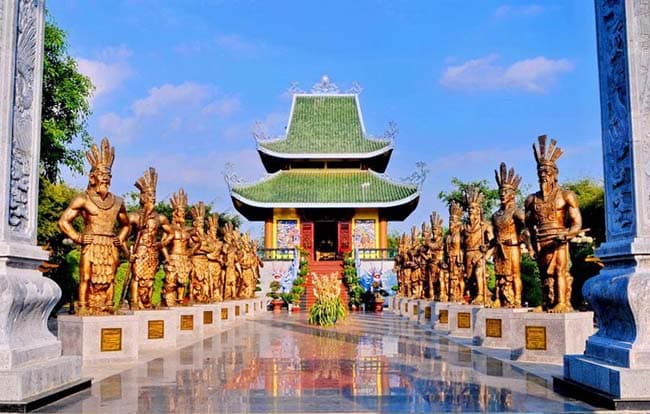
When is Hung Kings’ Festival?
This festival takes place from the 8th to the 11th of the third lunar month every year, so its Gregorian calendar date always changes. The main festival date is the 10th day of the third lunar month and is recognized as a public holiday throughout Vietnam.
In 2023 Commemoration Day is Saturday 29 April (public holiday Tuesday 2 May) and in 2024 Commemoration Day and holiday will both be 18 April.
What is the Hung Kings’ Festival?
The Hung King Temple Festival commemorates the death anniversary of the 18 Hung Kings. Yes, that’s right, it is believed that all 18 kings ascended to heaven on the same day, leaving behind them the wonderful legacy of a united and prosperous Vietnam and that’s why the death of the Hung Kings is an important part of Vietnam’s mythology.
In effect this national festival celebrates a ‘birth-of-nation creation myth’. But is there historical evidence that the Hung Kings’ dynasty existed at all?
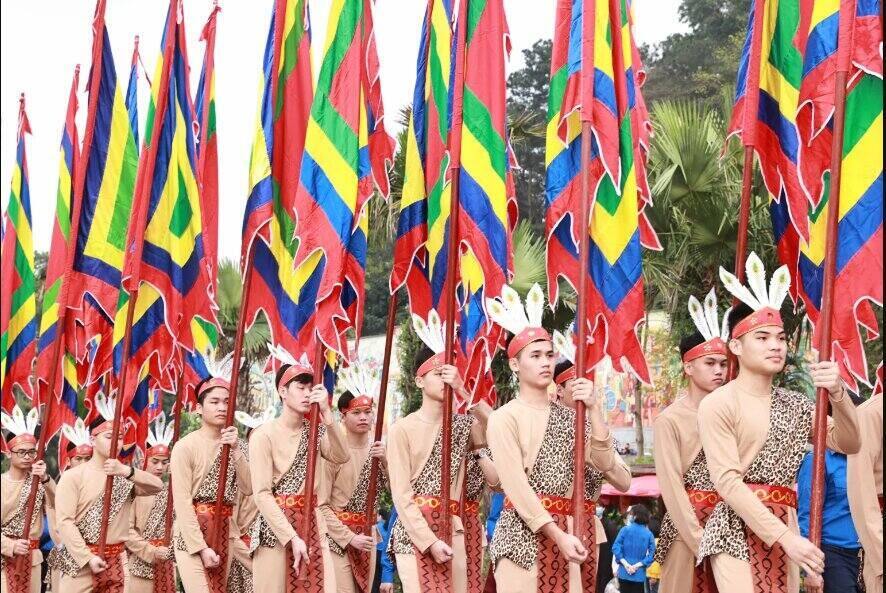
The Hung Kings – The History
Were the Hung Kings Real Historical Figures or Mythical?
The question of whether the Hung Kings are real historical figures or just mythical figures is a subject of ongoing debate among historians and experts. There is no consensus on this issue, and the story of the Hung Kings has mixed historical and legendary elements.
According to most scholars, the figure of the Hung Kings may be based on actual historical figures or events, but the historical evidence is scarce and open to interpretation.
Some historians believe that the story of the Hung Kings represents a composite of several tribal leaders or rulers who lived during ancient times.
Regardless of the historical accuracy of the Hung Kings’ story, it has played and continues to play an essential role in Vietnamese culture and is a crucial symbol of national identity for the Vietnamese people.
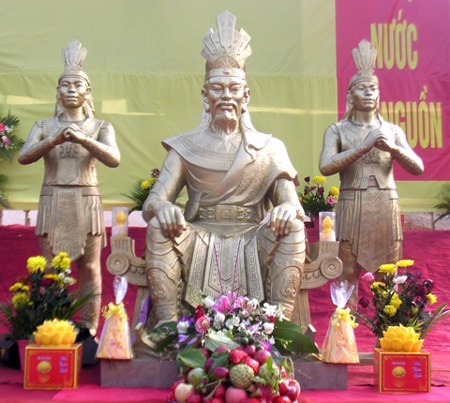
What is the Legend of the Hung Kings?
The legend of the Hung Kings goes back over 4,000 years when Vietnam was just beginning to take shape. The land at this time was inhabited by many different tribes, each with its own customs and traditions.
Legend has it that Lac Long Quan, a dragon king, and Au Co, a fairy, met and fell in love. Together they had many children. One of their sons, Hung Vuong, became the first king of Vietnam and founded the Hung dynasty, which lasted for over 2,000 years. In the magical fancy of myth their other sons succeeded him in turn over the two millennia.
Known for their wisdom, strength, and courage, the ‘semi-divine’ Hung Kings are considered the founders of Vietnam as they united the various tribes into a single nation. They are also hailed for shaping Vietnam’s identity with their methods of farming and hunting. For example, these kings taught people how to grow wet rice, and pray for good harvests.
The story of the Hung Kings is a source of great pride for the Vietnamese people, and it is an essential part of their cultural identity. It serves as a reminder of the country’s rich history and its ancient roots.
While many believe nowadays that the Hung Kings were ‘invented’ in the middle ages to make Vietnam’s beginnings distinct from that of China, their symbolic importance in Vietnam has remained undiminished.
What Were the Achievements of the Hung Kings?
According to a mix of legend and historical records, the Hung Kings are believed to have made several significant advances in Vietnam during their reign.
These achievements include: unifying the tribes of the region. developing agriculture and irrigation systems, creating a legal system, expanding trade with neighboring regions, and protecting the country from invasion.
How do People Celebrate Hung Kings’ Festival?

Religious Commemorations
Throughout the festival, there are events taking place across the 1400 Hung King temples around Vietnam.
The most notable celebration takes place in the ancestral land of the Hung Kings in the northern province of Phu Tho, 85km northwest of Hanoi. Over the course of the festival hundreds of thousands of people take offerings and make the trip up Nghia Linh Mountain in procession, stopping at each worship site until they reach the highest temple.
One of the most important rituals across the country at the festival is the ‘Nam Giao Offering’ which is a solemn ceremony where offerings of food and wine are made to show respect for the Hung Kings and their ancestors. The ceremony is performed by a high-ranking official, who represents the people of Vietnam, and is accompanied by traditional music and dance.

Hung Kings’ Festival General Celebrations
In addition to the religious ceremonies and rituals, the Hung Kings’ Festival includes several non-religious celebrations that are an important. Some of these celebrations include:
Cultural performances – traditional music, dance, and other arts.
Traditional games – traditional folk games are played during the festival, such as tug-of-war, greasy pole climbing, and stick pushing.
Sports competitions – sporting events such as dragon boat races or wrestling competitions.
This national holiday also features rice cooking competitions, bronze drum performances and dragon dancing.
Food at Hung Kings’ Festival
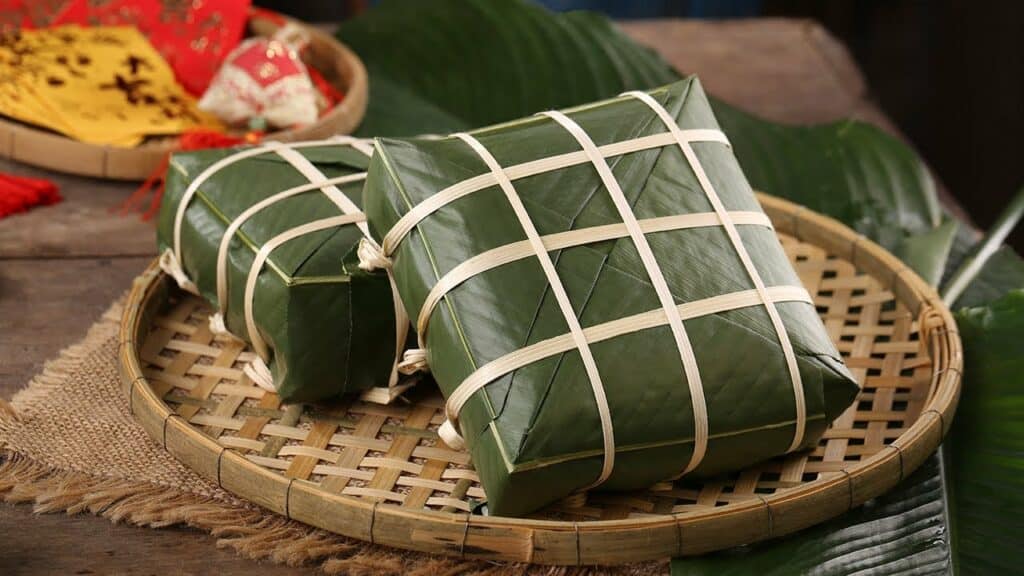
Food plays an essential role in the Hung Kings’ Festival. During the festival, people offer and enjoy traditional Vietnamese dishes that have cultural and symbolic significance.
One of the most important dishes associated with the festival is ‘banh chung’, which is a sticky rice cake made from glutinous rice, pork, and beans, and wrapped in dong leaves. Banh chung is believed to have been invented by Lang Lieu, the 18th Hung King, who wanted to create a food that symbolized the earth and served as a tribute to his ancestors.
Another dish that is closely associated with the festival is ‘nem ran’ which is a type of fried spring roll, filled with minced pork and vegetables. The dish is said to represent the sun and is a symbol of good luck and prosperity.
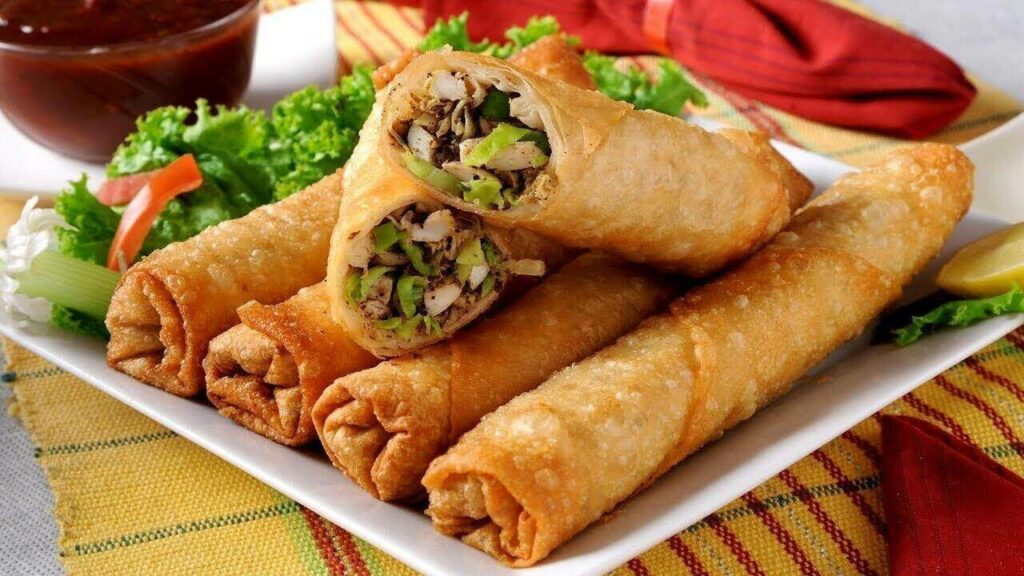
People bring the traditional dishes banh giay (crushed sticky rice pudding), banh chung (sticky rice cake) and Hue wine in particular as symbolic offerings to Hung temples. Such offerings are often accompanied by flowers and incense sticks.
The bright yellow color of Hue (rice) wine is thought to symbolize prosperity and fertility, while its sweetness evokes feelings of joy, happiness, and good luck. It is often presented as an offering to express gratitude for the achievements of the Hung Kings and their role in shaping Vietnam’s culture.
Banh chung is also thought to symbolically represent several concepts related to Vietnamese culture, such as prosperity and fertility. The green beans inside the cake symbolize growth and optimism while the square shape signifies unity among all four sides of Vietnam.
Good
Nice article!